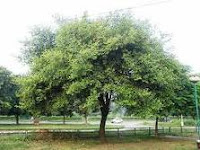The date plum is so called because it tastes like a cross between date and a plum. In fact it is not related to either, but is a very close relation to the persimmon. It is native to the Himalayas and grows wild in Pakistan and India, where it does not yet have a history of cultivation. In fact ethnobotanical studies carried out in the Palas and Swat Valleys of Pakistan have suggested that the fruit be grown on a commercial basis in order to improve the economy of those rather poor areas.
The fruit of Diospyros lotus begins green, then the unripe fruit turns yellow (and should not be eaten at this stage) and finally turns purple-black. It looks like a small black persimmon and has 5 or 6 large seeds inside it. The fruit is sometimes dried and is tasty like this too. The fruit is only 1 or 2 centimetres in diameter, but is highly valued for its sweetness.
The fruit is mentioned in Homer’s “Odyssey”; it is the lotus that made Odysseus’ men forget their homeland Ithaca while they were in the land of the “lotus eaters Ancient Greeks esteemed this fruit highly and called it “the fruit of the gods”.
The date-plum has potent antioxidant effects and results of modern medical trials suggest that it might be a good treatment for diabetes. It also exhibits potency in combating free radicals, so is thought to be an anti-cancer agent.
In traditional medicine in the Indian subcontinent, the fruit is used as a laxative and purgative while the watery extract from parts of the tree has wound healing properties. It is also used to combat fevers.
The wood from the tree is a poor quality ebony, (Diospyros ebenum) and because it polishes up well is used to make musical instruments- in particular the keys of pianos.
It is grown in southern Europe and could also be a native plant of Turkey where it grows in abundance. It was introduced into Britain in 1597 and was cultivated in the 17th century, although it never gained popularity with gardeners. In Britain it grows only to half its potential full size, as in its native habitat it grows to heights of 30 metres.
It is eaten raw and used in fruit salads, and once tasted you can’t resist it, whether it is fresh or dried. There aren’t any recipes from us, as we just eat the delicious fruit whenever we find it.














